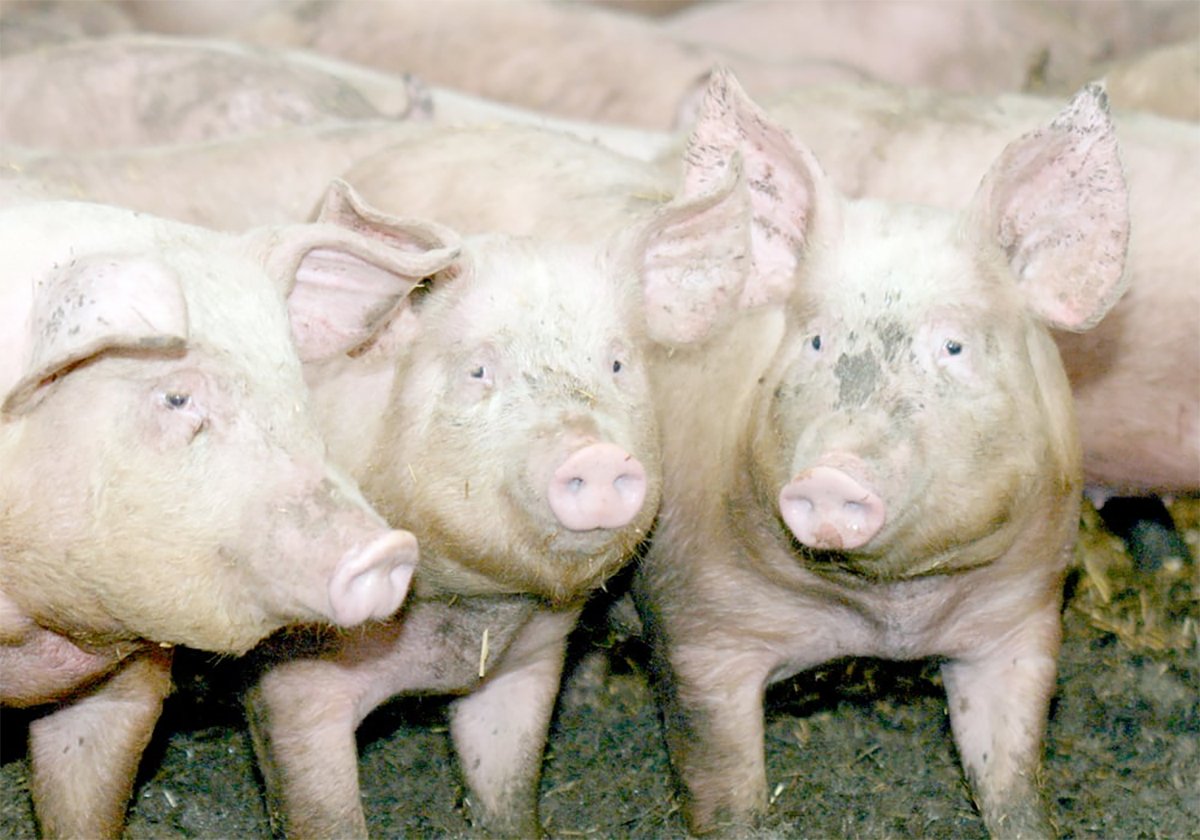Tracy Gaulter wasn’t even born the last time Canada hosted the World Simmental Congress in 1978.
At 24, she is part of a new generation of breeders and started her own program with 30 black Simmentals at Thorsby, Alta. She did a good enough job with a cow-calf pair to win the world female championship during this year’s Calgary Stampede.
“This is the first big pair I have brought out,” Gaulter said.
Her business partner is Ryan Cook of Cochrane, Alta., who owns Trendsetter Livestock Services. He looks after the prize-winning pair and owns a half interest in the cow, which Gaulter bought as a calf. She showed it as a futurity calf and as a yearling but never won any significant awards.
Read Also

The Western Producer Livestock Report – November 13, 2025
Western Producer Livestock Report for November 13, 2025. See U.S. & Canadian hog prices, Canadian bison & lamb market data and sales insights.
In fact, as a futurity heifer, it stood seventh in class.
When she is not working with her cattle or grooming animals through her company, T Bar G Cattle Services, Gaulter works as an apprentice welder at Nisku, Alta..
Raising cattle is a full time job at Wheatland Simmental Stock Farm, which had this year’s world champion bull.
It was a good day for long time breeders Vernon and Denise Lafrentz of Bienfait, Sask. They also won the reserve champion cow, a half sister to the top bull. Both are solid black.
The bull, Wheatland Bull 468P, is a proven breeder with one calf crop on the ground and another breeding season behind him. It won championships as a youngster and some of its sons will be offered for sale, said Vernon.
“We thought he looked good. It’s nice that somebody else thought so too.”
The owners of the world champion bull won a one-year lease on a stock trailer, $1,000 and other prizes donated by sponsors.
The bull will go back to Saskatchewan before it competes in the supreme championship show at Canadian Western Agribition this November in Regina.
“He’ll go back home and put his feet up,” said Vernon.
The Lafrentz family got started in the Simmental business when Vernon’s father imported cattle from Europe in 1971. Vernon and Denise continued the tradition but have changed the breeding to include solid red and black cattle.
They also changed their marketing plans and switched from selling everything by private treaty off the farm to joining with a Hereford breeder to stage an annual bull sale.
In their first sale in 2005, they averaged $9,000 and in 2006, the sale had a $7,200 average.
While no foreign cattle could cross into Canada for the 230 head Stampede show last week, international owners were there because they keep animals in Canada.
The reserve champion bull is owned by Antonio Pinherio Machado. He manages the company Agro Zurita at Sao Paulo, Brazil, which owns about 50 cattle in Canada.
Machado makes the 10 hour flight to Toronto four to six times per year to inspect cattle and make deals on beef genetics.
While offshore owners can import Canadian embryos and semen, Machado would prefer his champion bull was at home.
“There are some good cattle here and I would like to take him home as soon as possible. In the past, we have taken them back to Brazil,” he said.
The Stampede show is part of the World Simmental Congress, which meets every two years.
This year there were representatives from 21 of the 25 member countries who toured farms and attended both the Stampede and an annual meeting in Calgary to discuss animal health, genetic work, trade and breed improvement.
For congress chair Bruce Holmquist, it was the culmination of a four-year process that has taken him away from his own herd of 160 Simmental and 60 Red Angus.
Based at Kinistino, Sask., Holmquist is the Canadian Simmental Association president and sits on the world executive.
“I’ve seen a lot of the world through this,” he said.
Meeting farmers from around the world has revealed differences in cattle preferences, but Holmquist has found one common issue.
“The concern around the world is about the survival at the farm gate,” he said.
The European visitors noticed the various types of Canadian Simmental with their beefy bodies and colour ranging from solid black or red, traditional red and white, and black and white.
Most accept that cattle have to be adapted to local conditions and markets, said Holmquist, and “we all share a passion for the breed.”
Simmentals came to North America when Canadian Travers Smith imported a bull named Parisien from France in 1967. Semen was introduced into the United States that same year, with the first half-blood Simmental calf born in February 1968.
The World Simmental Federation was formed in 1974.















